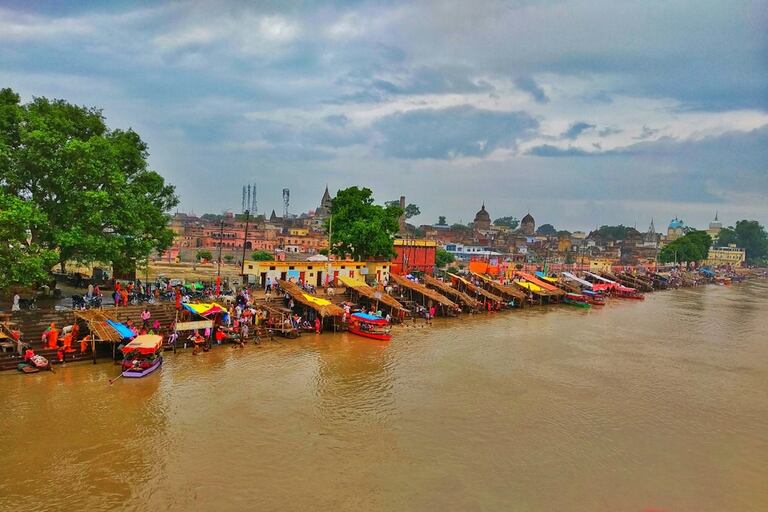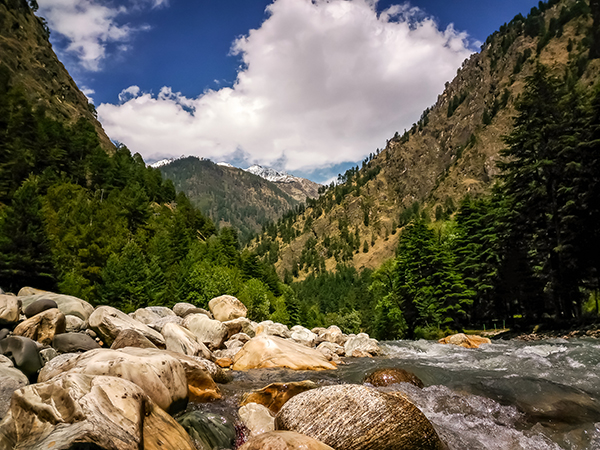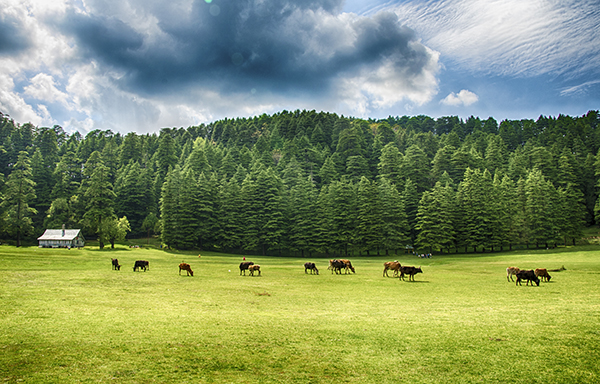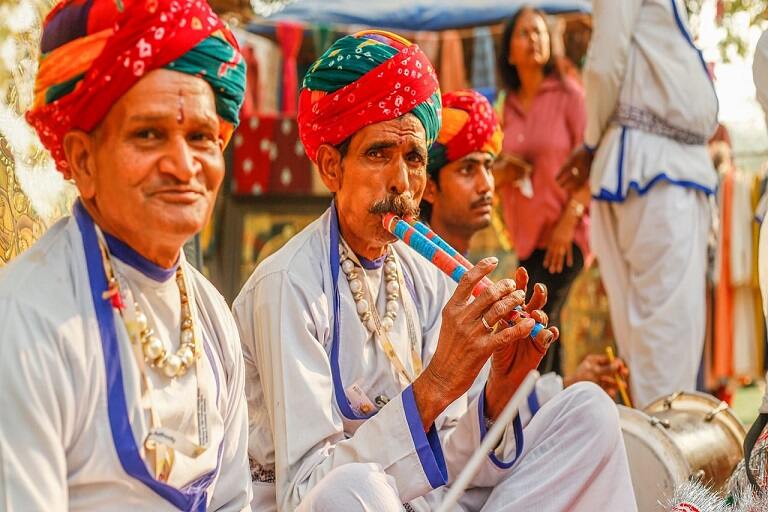
Ayodhya Ram Temple: Uttar Pradesh
Table of contents
Ayodhya is a significant city in Uttar Pradesh with a rich history and cultural heritage. The city is famous for its ancient Indian civilization and religious significance, centred around the Sarayu River. At the heart of Ayodhya’s cultural beauty is the mandir, a magnificent Ayodhya temple that stands as a testament to the enduring spirit of devotion and the resilience of its community.
This article delves into the important facts surrounding the mandir, including its architectural highlights and significance.
Ayodhya Uttar Pradesh: Important Facts About Ayodhya Ram Mandir
- Chief Architects: Chandrakant Sompura, Ashish Sompura and Nikhil Sompura.
- Construction Company: Larsen and Toubro (L&T).
- Design Advisors: IIT Chennai, NIT Surat, IIT Guwahati, IIT Bombay, National Geo Research Institute, Central Building Research Institute Roorkee, and the National Institute of Rock Mechanics.
- Sculptors: Ganesh Bhatt, Satyanarayan Pandeym and Arun Yogiraaj.
- Total Area: 70 Acre
- Temple Area: 77 Acre
- Architectural Style: Indian Nagar Style
- Architectural Highlights: 392 pillars, 3 stories, 44 doors.
Architectural Highlights of Ayodhya Ram Temple
The Ram Mandir in Ayodhya is a remarkable fusion of artistic vision and traditional architectural expertise. Grand dimensions and intricate details characterise its impressive design. Led by Chandrakant Sompura, the temple’s architects drew inspiration from different temples to create a design that beautifully captures both creative brilliance and the essence of traditional Indian architecture.
Here are some interesting highlights of Ayodhya Ram Temple.
1. The Foundation
For the foundation of the Ayodhya Ram Temple, a robust and reliable structure has been crafted to ensure the Ayodhya mandir stands strong. A massive 14-meter-thick layer of roller-compacted concrete, resembling a solid artificial rock, forms the base of this grand Ayodhya Ram Temple. This concrete layer is the foundation, providing stability and durability to support the above Ayodhya temple. To guard against ground moisture and enhance the foundation’s strength, a substantial 21-foot-high plinth made of granite has been constructed.
2. Main Temple
The main temple of the Ayodhya Ram Temple stands as a towering testament to the grandeur of Hindu temple architecture. The Ayodhya mandir is built in Nagara style and features five Mandaps or halls – Nritya, Sabha, Rang, Kirtan and Prarthna. The Ayodhya Ram Temple consists of three floors, each designed to give devotees a spiritual experience of the different stages of Lord Rama’s journey.
With a total of 44 doors, some coated in 100 kg of gold, it radiates opulence. The Singh Dwar, the main entrance, welcomes you with statues from the Ramayana. Pillars and walls are adorned with deities and intricate carvings reflecting India’s history. The parikrama path showcases 100 events from Valmiki’s Ramayana engraved on its columns and walkways. It’s one of the most popular temples in Ayodhya and a must-visit on your Ayodhya tour.
3. Temple Complex
The Ayodhya Ram Temple is encircled by a rectangular compound wall called Parkota, measuring 732 meters long and 14 feet wide. This ensures the Ayodhya temple is well-secured and safe. You’ll discover several other structures as you explore beyond the main Ayodhya Ram Temple. There are temples built at each corner of the compound. These temples are dedicated to Bhagwati, Surya Dev, Ganesh Bhagwan, Lord Shiva, and Devi Bhagwati. The northern part of the Ayodhya Ram Temple houses the temple of Maa Annapurna, while the southern part features a temple dedicated to Lord Hanuman.
You’ll find the historic Sita Koop near the temple, a well dating back to ancient times, adding a touch of heritage to the surroundings. Further plans for the temple complex include temples dedicated to Maharishi Vashishtha, Maharishi Vishwamitra, Maharishi Valmiki, Nishad Raj, Maharishi Agastya, Mata Shabri, and Devi Ahilya. Medical facilities, locker facilities, a bathing area, and a museum that houses artefacts related to Ramayana and Lord Ram are all housed within Ayodhya, Ram Mandir, Uttar Pradesh.
4. Other Architectural Facts of the Ayodhya Ram Mandir
The Ram Mandir in Ayodhya is an important symbol of culture and religion. The temple houses idols of Lord Rama, carved from sacred Shaligram Rocks that are 60 million years old and were sourced from the Gandaki River in Nepal. To ensure that the temple’s identity is preserved and not forgotten, a time capsule has been buried approximately 2,000 feet underground. This capsule contains a copper plate inscribed with important information about the Ram Temple, Ayodhya and Lord Rama. The temple was built to withstand earthquakes.
One of the most captivating features of the Ayodhya Ram Temple is its bell, made from a blend of Ashtadhatu—Gold, Silver, Zinc, Copper, Tin, Lead, Mercury, and Iron. Weighing an impressive 2100 Kg, the bell echoes up to 15 kilometres. The Ram Temple Ayodhya is a must-visit when visiting Uttar Pradesh. Ayodhya tourism promises an immersive experience for all types of travellers visiting the land.
5. The Nagara Style of Temple Architecture
The Ayodhya Ram Temple possesses the unique Nagara style of architecture. First is the Grabhgriha or Sanctum Sanctorum, a small room where the main god or goddess stays. Then there’s the Mandapa, a hall leading you to the Sanctum Sanctorum. There’s also the Shikhara, a spire that looks like a mountain and can be shaped like a pyramid or a curve. Lastly, there’s the Vahana, a seat for the main god. These are some of the interesting features of the Ram Temple, Ayodhya.
Ayodhya Uttar Pradesh: Significance of Ram Mandir’s Construction
The completion of the Ayodhya Ram Mandir holds great importance for various reasons, going beyond religious aspects. Firstly, it marks the end of long-standing disagreements between Hindus and Muslims, promoting understanding and peaceful coexistence among different religious groups. The temple symbolises unity, bringing people together in a spirit of tolerance and respect.
The Ram Temple, Ayodhya is a powerful emblem of India’s cultural and historical heritage. Its construction is a significant step towards cherishing and safeguarding the unique aspects that make our country special. The temple symbolises pride, connecting people to their roots and shared history.
Around the temple, there are plans to set up places that will help the community. These places will engage in activities that benefit the people. This contributes to the community’s overall welfare and promotes a spirit of mutual support. Economically, the Ram Mandir is expected to boost tourism in Ayodhya, leading to the growth of businesses, job opportunities, and prosperity in the region.
In addition, the construction of the Ram Mandir initiates infrastructural improvements in Ayodhya, Uttar Pradesh. This includes better roads, airports, and potential growth in industries.
Places to Visit Near Ram Mandir
On your Ayodhya trip, you can also visit some other popular attractions around the place. Each attraction offers a unique experience, making your trip extraordinary. Here are some of the top attractions you can visit in Ayodhya.
- Sita ki Rasoi: Just a short distance from the Ayodhya Ram Mandir, explore Sita ki Rasoi, a place steeped in mythology. According to legend, this is where Sita, Lord Rama’s consort, is said to have cooked meals during their time in Ayodhya.
- Kanak Bhawan: Visit Kanak Bhawan, a significant site associated with Lord Rama and Sita. This palace was believed to be a gift to Sita by Lord Rama’s mother, Kaikeyi. It showcases intricate architecture and historical connections.
- Hanuman Garhi: A brief walk from the Ram Mandir leads you to Hanuman Garhi, a temple dedicated to Lord Hanuman. Immerse yourself in the vibrant atmosphere and witness the lively devotional activities at this sacred spot.
- Treta Ke Thakur: Near the Ram Mandir, discover Treta Ke Thakur, a serene temple surrounded by greenery. This tranquil spot is believed to be the exact location where Lord Rama performed the Ashvamedha Yagna.
- Nageshwarnath Temple: Explore the nearby Nageshwarnath Temple, which is dedicated to Lord Shiva. This ancient temple holds religious significance and adds another layer to your spiritual journey in Ayodhya.
- Sarayu River Ghats: Take a short walk to the banks of the Sarayu River, where you can enjoy the serene surroundings. Here, you can also take a boat ride to enjoy the beauty around you. The river holds cultural and religious importance, providing a peaceful retreat.
- Guptar Ghat: Not far from the Ram Mandir, visit Guptar Ghat, which is believed to be the spot where Lord Rama took Jal Samadhi. The ghat offers a calm atmosphere for reflection and contemplation.
- Tulsi Smarak Bhawan: Explore Tulsi Smarak Bhawan, dedicated to the renowned poet-saint Tulsidas. This museum showcases artefacts related to his life and works, offering insights into the cultural heritage of Ayodhya.
Things to keep in Mind When Visiting the Ram Mandir
- Dress Modestly: When visiting the Ram Mandir, it’s important to dress modestly and respectfully. Wearing modest clothing covering shoulders and knees is generally considered appropriate for a place of worship.
- Follow Temple Customs: Be aware of and follow any specific customs or rituals observed at the Ram Mandir. This may include removing shoes and maintaining a quiet and reverent demeanour before entering certain areas.
- Maintain Silence: It’s customary to maintain a peaceful and quiet atmosphere inside the temple premises. Refrain from loud conversations or disruptive behaviour to ensure a harmonious environment for worship.
- Photography Restrictions: Respect any restrictions on photography within the temple complex. Some religious sites have restrictions on capturing images, especially in the inner sanctum, out of reverence for the sacred surroundings.
- Observe Timings: Be mindful of the temple’s opening and closing times. Plan your visit accordingly to ensure you have ample time for worship and exploration without disrupting the regular schedule of the temple.
- Show Respect to Deities: When in the presence of the deities or sacred symbols, show utmost respect. Avoid touching any religious artefacts unless explicitly allowed, and refrain from any behaviour that may be deemed disrespectful.
- Follow Security Protocols: Cooperate with any security measures in place. This may include undergoing security checks or following specific entry and exit procedures to ensure the safety of all visitors.
- Mobile Phones and Electronic Devices: Turn off or silence your mobile phones and electronic devices inside the temple. This helps maintain a focused and serene atmosphere and avoids disturbing other worshippers.
- Be Mindful of Crowds: Especially during festivals or special events, the temple may experience larger crowds. Be patient, follow queues, and cooperate with temple staff to ensure a smooth and orderly visit.
- Donation and Prasad: If you wish to donate or receive prasad, follow the designated procedures. Be cautious of any unauthorised individuals seeking contributions and use the official donation boxes provided by the temple.
By considering these considerations, you can ensure a respectful and meaningful visit to the Ram Mandir in Ayodhya, fostering a positive experience for yourself and fellow worshippers. These nearby attractions provide a well-rounded experience, allowing you to delve deeper into the cultural, historical, and mythological aspects surrounding the Ayodhya Ram Mandir. The construction of the Ram Mandir in Ayodhya is a transformative journey beyond bricks and mortar.
The architectural marvel of the temple, with its Nagara style, stands as a symbol of cultural identity, while its significance transcends religious boundaries, fostering unity and economic development. With the completion of the Ram Mandir, Ayodhya not only reclaims its historical glory but also paves the way for a harmonious future where spirituality and culture converge to create a timeless legacy.
To book your trip to Ayodhya, check out Thomas Cook for the best tour packages. With a wide range of options to choose from, including accommodation, transportation, and guided tours, you can find the perfect package to suit your needs and budget. Don’t miss out on the opportunity to explore this beautiful destination hassle-free and with the help of experienced professionals.
Table of contents
Trending blogs for you
 18002099100
18002099100




















